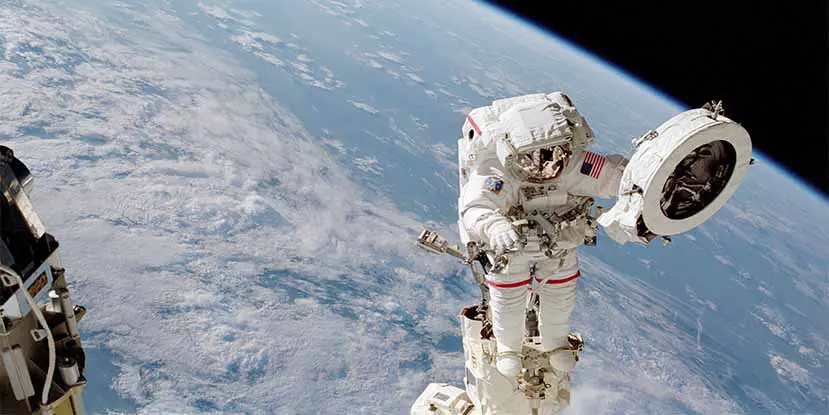For decades, people have talked about going to Mars. Since our nearest neighboring planet is over 34 million miles away, astronauts would face over a year of round trip travel. During such a long voyage, the health of astronauts would be of chief concern. While any possible manned voyages are decades away, scientists are already working to find a solution to a puzzling question: Why does the skin of astronauts get thinner in space?
Led by Professor Karsten Koenig from the Department of Biophotonics and Laser Technology at Saarland University, researchers have used high-resolution skin imaging tomography to look into the skin cells of several astronauts before and after a trip into space. The spatial resolution of the laser technology is a thousand times higher than that of ultrasonic devices. It could potentially revolutionize diagnosis’ in hospitals. Professor Koenig says:
We use femtosecond laser pulses. We scan the skin and we get signals from the skin, particularly fluorescence, as well as another signal called second harmonic generation. So with these two signals we can build up images and get a precise look into the skin with a high resolution. The resolution is a factor of one thousand (times) better than ultrasound. So now you get the information without taking biopsies; normally you slice them, you stain them, and then a pathologist would look through these sections. Now you can get this information in seconds, labor free and with this fantastic resolution.
So far, Koening and his team have scanned three astronauts – two Italian astronauts and one German. One of the Italian astronauts, Samantha Cristoforetti, holds the record for female astronauts – 199 days in space.
Koenig says, “So far we’ve got interesting results from three astronauts. It seems that there is a strong production of collagen; so suddenly these astronauts have more collagen. It means there is some sort of anti-ageing effect, at least in the dermis – the lower part of the skin. And we found that the epidermis, in particular the part of the living cells, that this epidermis is shrinking, so the skin gets thinner.”
“So far we have no explanation yet, and we are waiting for the other astronauts to figure out what’s going on and maybe to try to figure out how we can protect, how we can help so that this epidermis is not shrinking,” he added.
The research into a cause and prevention for the thinning skin is important, as the results are occurring in less than six months and a potential trip to Mars could be years of travel.
Let us know your thoughts on a potential manned trip to Mars. Would you be up for it? Let us know in the comments!
[button link=”http://www.reuters.com/article/2015/07/20/us-germany-astronaut-skin-idUSKCN0PU13M20150720″ icon=”fa-external-link” side=”left” target=”blank” color=”285b5e” textcolor=”ffffff”]Source: Reuters[/button]Last Updated on November 27, 2018.











Comments are closed.